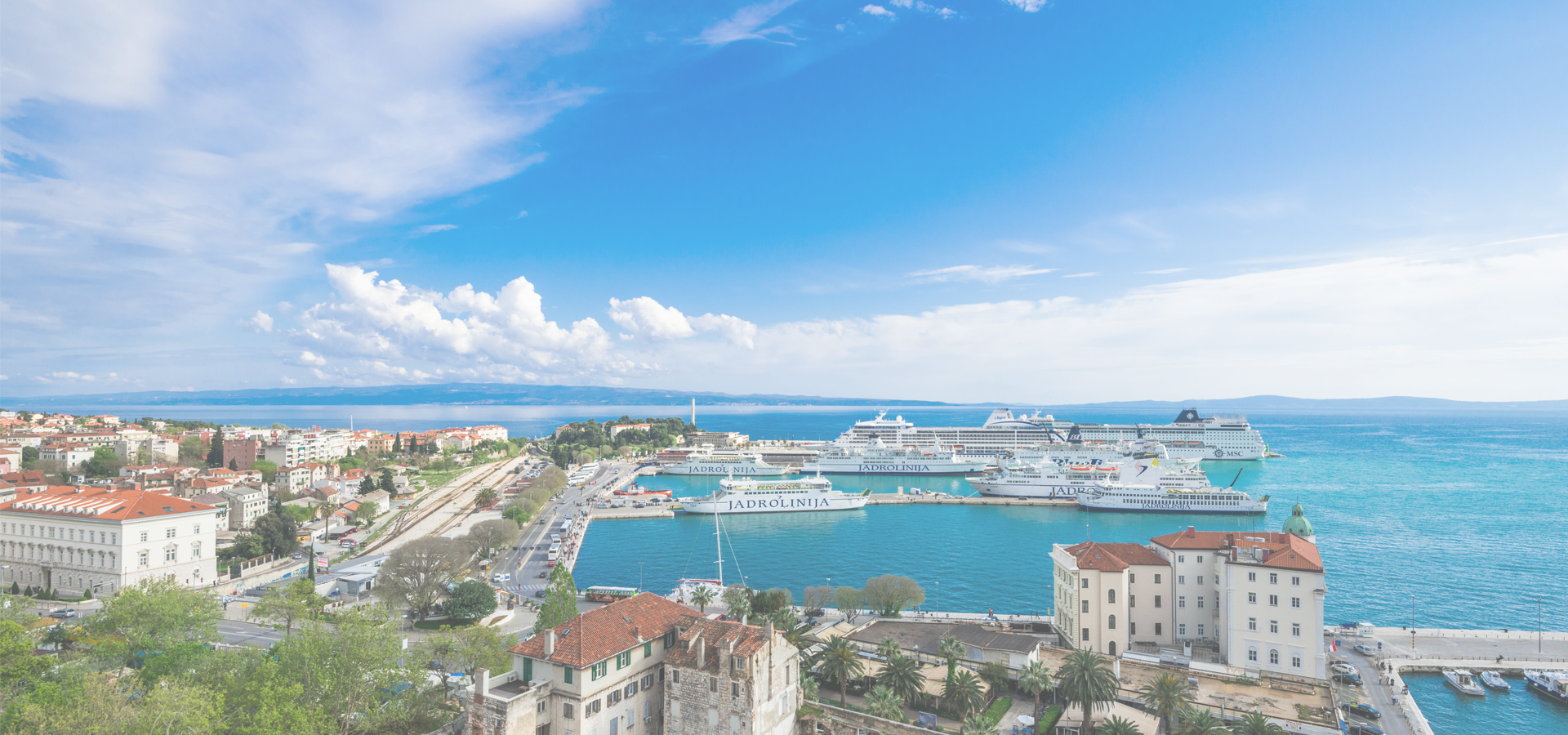Makarska, Split-Dalmatia County, Croatia
🇭🇷 Makarska is a town on the Adriatic coastline of Croatia, about 60 km (37 mi) south-east of Split and 140 km (87 mi) north-west of Dubrovnik, in the Split-Dalmatia County.
Makarska is a prominent regional tourist centre, located on a horseshoe-shaped bay between the Biokovo mountains and the Adriatic Sea. The city is noted for its palm-fringed promenade, where cafes, bars and boutiques overlook the harbor. Adjacent to the beach are several large capacity hotels as well as a camping grounds.
Makarska is the centre of the Makarska Riviera, a popular tourist destination under the Biokovo mountain. It stretches for 60 km (37 mi) between the municipalities of Brela and Gradac.
1Pre-history Near present-day Makarska, there was a settlement as early as the middle of the 2nd millennium BC. It is thought that it was a point used by the Cretans on their way up to the Adriatic (the so-called "amber road"). However it was only one of the ports with links with the wider Mediterranean, as shown by a copper tablet with Cretan and Egyptian systems of measurement.
A similar tablet was found in the Egyptian pyramids. In the Illyrian era this region was part of the broader alliance of tribes, led by the Ardaeans, founded in the third century BC in the Cetina area (Omiš) down to the River Vjosë in present-day Albania.
1The 20th century In the early 20th century agriculture, trade and fishing remained the mainstay of economy. In 1914, the first hotel was built, beginning the tourism tradition in the area. During World War II, Makarska was part of the Independent State of Croatia. It was a port for the nation's navy and served as the headquarters of the Central Adriatic Naval Command, until it was moved to Split.
After the war, during the socialist Yugoslavia, Makarska experienced a period of growth, and the population tripled. All the natural advantages of the region were used to create in Makarska one of the best known tourist areas on the Croatian Adriatic.
1The 21st century After the Croatian independence Makarska had a sustained growth in first few years with many of the refugees (mostly from Herzegovina) being accommodated in tourist accommodation. In the late 90s tourism was thriving again and in following decades created a speculative, rapid and wild construction boom with lot of highly problematic expansions (especially in Veliko Brdo), while with little or no urban planning at all. Local and regional experts have been active in drawing attention to the problems caused by the lack of planning and in this have recently been joined by members of the local population and citizens along with urban and environmental activists.
1Geography Makarska is located in central Dalmatia, at the junction of Biokovo and the Adriatic Sea.
The town is sharply separated from the interior by the mountain Biokovo (the highest peak of St. George, 1762 m), and it is connected with the central Dalmatian islands of Brač and Hvar by the Adriatic Sea, which modelled some of the most beautiful Croatian beaches in the Makarska Riviera.
The town itself is located in a natural harbour between two peninsulas, Osejava and Sv. Petra. The flysch zone between the mountain and the sea is only a few km wide, so that the further expansion of the city goes to the east and west, i.e. to the neighbouring settlements of Tučepi and Krvavica.
1Economy The main economic activity of Makarska, as well as the whole region, is tourism. Tourists have at their disposal a large number of beds in the hotel and private accommodation.
1Tourist Industry • St. Mark's Cathedral (17th century), in the Main Square. • Statue of the friar Andrija Kačić Miošić by the famous Croatian sculptor Ivan Rendić. • St. Philip's Church (18th century). • St. Peter's church (13th century), situated on the Sv. Petar peninsula, rebuilt in 1993. • The Franciscan monastery (16th century). It houses a library with numerous books and rare incunabulas and a famous, world known collection of shells from all over the world, collected in a Malacological Museum from 1963. • Napoleon monument, erected in the honour of the French Marshal Marmont in 1808. • The Baroque Ivanišević Palace. • Villa Tonolli, which is home to the Town Museum.
1Europe/Zagreb/Split-Dalmatia

Makarska has a population of over 13,834 people. Makarska also forms part of the wider Split-Dalmatia County which has a population of over 454,798 people.
Twin Towns, Sister Cities Makarska has links with:
🇲🇪 Budva, Montenegro 🇧🇦 Bugojno, Bosnia and Herzegovina 🇲🇰 Kavadarci, North Macedonia 🇸🇮 Maribor, Slovenia 🇩🇪 Neumarkt in der Oberpfalz, Germany 🇮🇹 Nocera Inferiore, Italy 🇨🇿 Olomouc, Czech Republic 🇮🇹 Roseto degli Abruzzi, Italy 🇧🇦 Sarajevo, Bosnia and Herzegovina 🇭🇷 Stari Grad, Croatia 🇩🇪 Stein, Germany 🇧🇦 Travnik, Bosnia and Herzegovina 🇭🇷 Vinkovci, Croatia 🇭🇷 Vukovar, Croatia 🇨🇿 Znojmo, Czech Republic 🇭🇷 Đakovo, Croatia